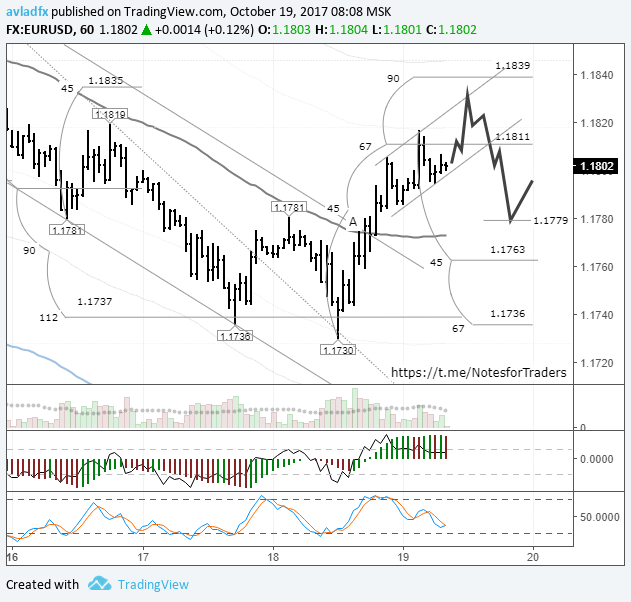Previous:
On Wednesday the 18th of October, trading on the euro/dollar pair closed up. After hitting a new weekly low, the price mounted a recovery to 1.1817 that extended into the Asian session. I can’t see any fundamental factors that would have caused the euro’s 87-pip rally. I reckon the price underwent a correction on the longer timeframes.
Newswires are reporting that the euro’s rally was the result of expectations that at this month’s ECB meeting, Mario Draghi will announce a reduction in the regulator’s asset purchasing program effective from January 2018. We could see the regulator reduce the volume of purchases, but extend the overall duration of the program. So, will this be good or bad for the euro? I think it best not to overthink this question. We should just play it as it comes.
Day’s news (GMT+3):

Fig 1. EURUSD rate on the hourly. Source: TradingView
The euro/dollar rate ricocheted from 1.1730 to 1.1817. The surge gathered pace after a breakout of the A-A channel and the 1.1781 top. I wrote yesterday that the H6 and H8 timeframes suggested the euro would strengthen against the dollar, while the H3 and H4 timeframe suggested the opposite. In the end, the price went down, and then traders started opening long positions.
The 67th degree provided some resistance. Accounting for the upwards movement from 1.1730, I reckon that when the European session opens, buyers will try to push the price up to 1.1830 to induce a reversal.









Leave A Comment